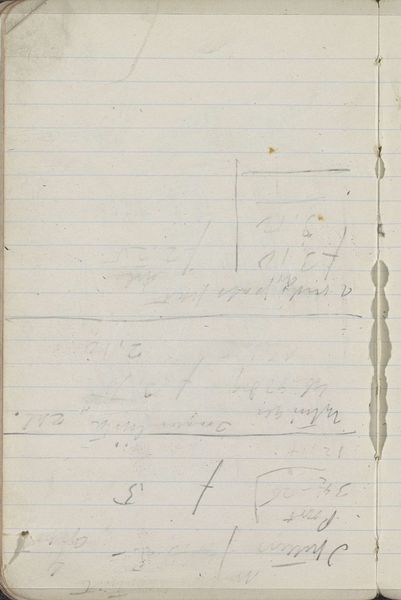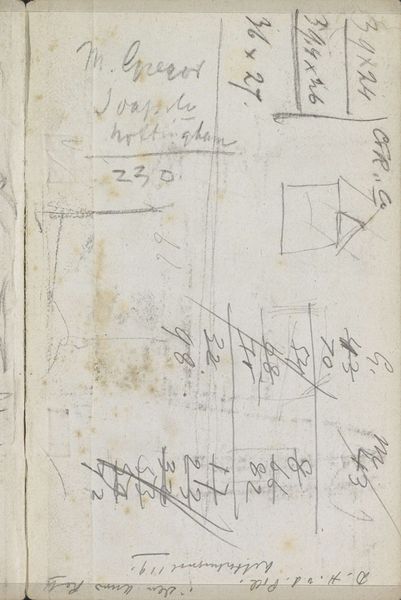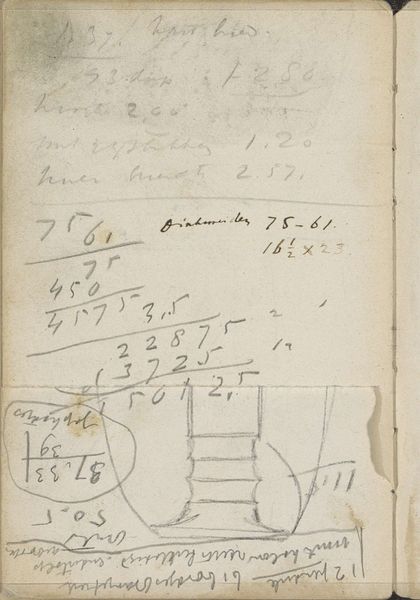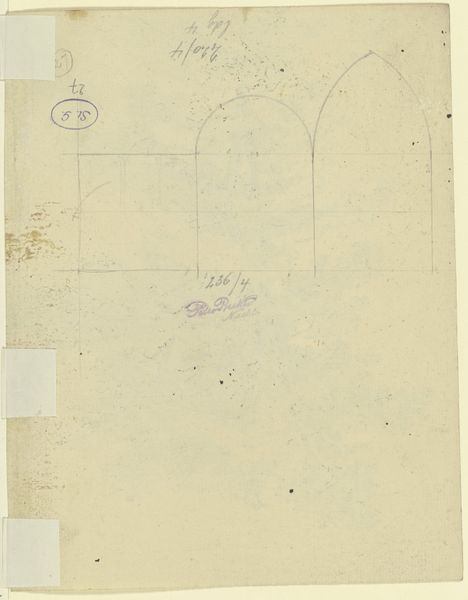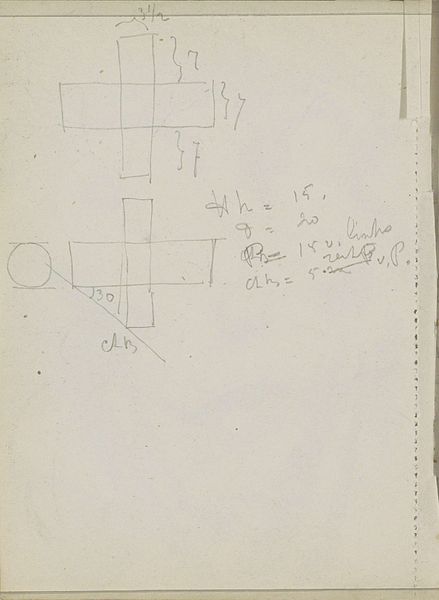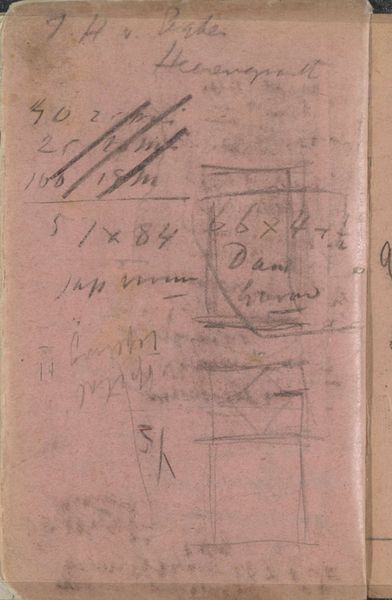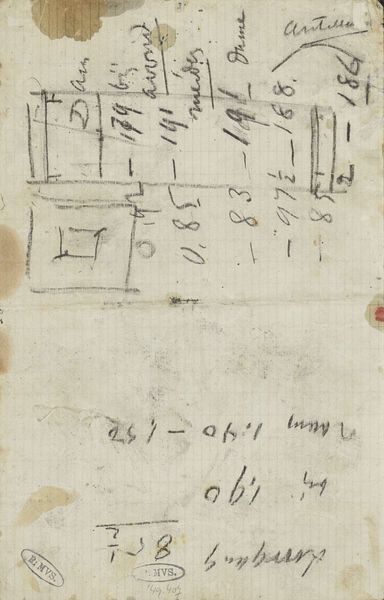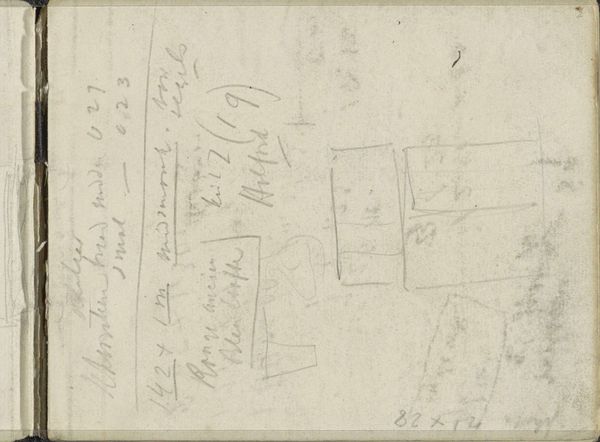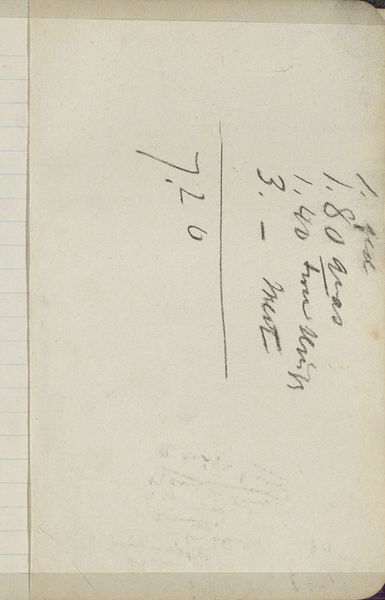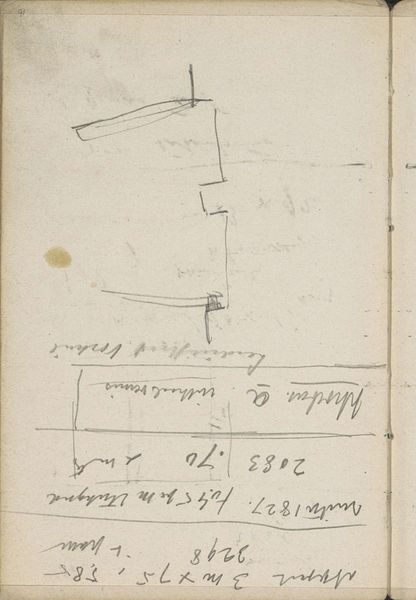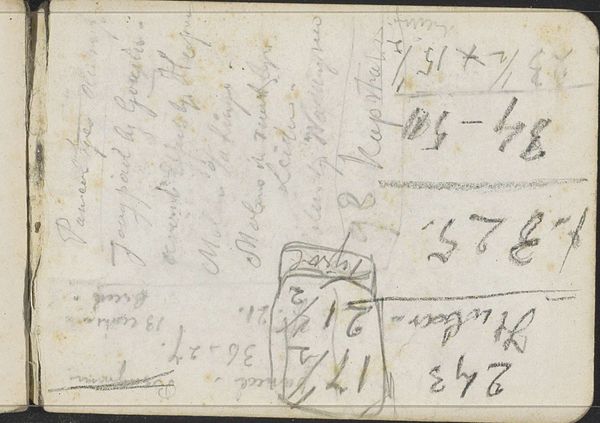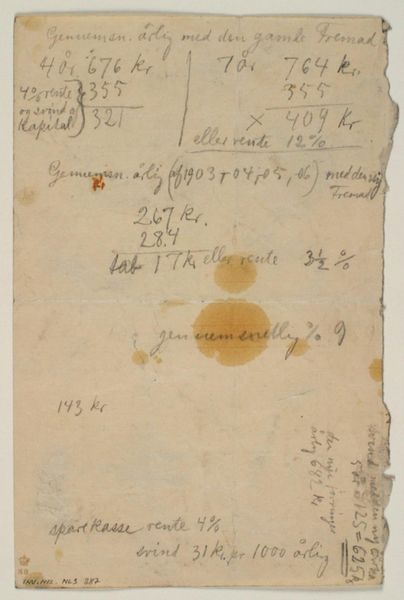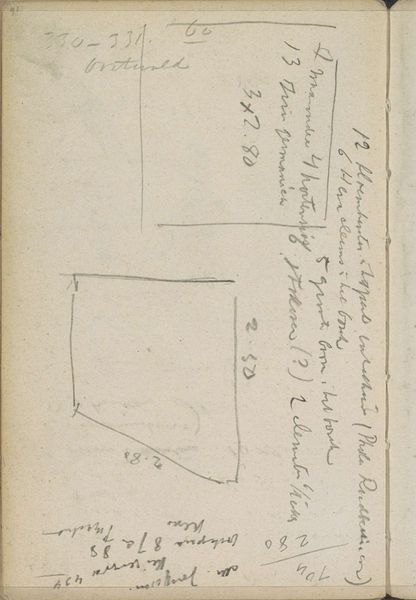
Copyright: Rijks Museum: Open Domain
Editor: Here we have "Annotaties," a drawing made with ink on paper by George Hendrik Breitner around 1896-1897. It's just lines and numbers on what looks like a page torn from a notebook. I am curious, what do you make of it? Curator: The power of this work resides primarily in its graphic structure and the tension between the geometric form and the free-flowing notations. Notice the incisive lines that define the rectangle, contrasting against the spontaneity of the handwritten elements. Editor: I see. So, you're focusing on how the image is made, not so much what it represents. But why combine these shapes and calculations? Curator: Indeed. The 'what' takes a back seat here. Consider the varying weights and textures of the ink. The artist compels us to study these forms, their relationships and inherent properties. Can you see any patterns emerging from this interplay? Editor: I think I understand. The composition's fragmented and feels unfinished. Is this a failed piece or is there value in its rawness? Curator: Whether intentional or not, this ‘rawness’ lays bare the fundamentals of the artist's process, creating an honesty which becomes compelling, a dynamic field rather than a static image. Ultimately, "Annotaties" serves as a study into pure form and its affect. Editor: This makes me see this drawing differently, as a peek into Breitner's thoughts about the underlying composition. Thank you. Curator: It was my pleasure. Looking closely, even at what seems simple, can reveal complex intentions and open up new ways of seeing.
Comments
No comments
Be the first to comment and join the conversation on the ultimate creative platform.
